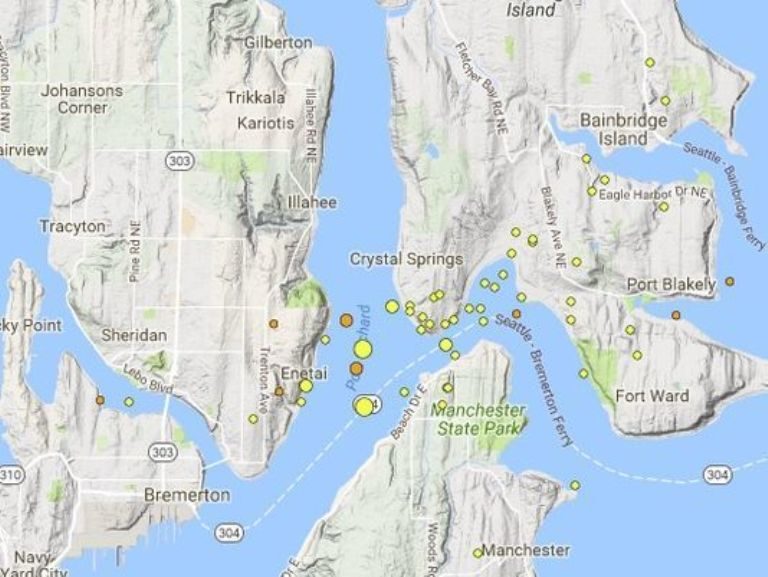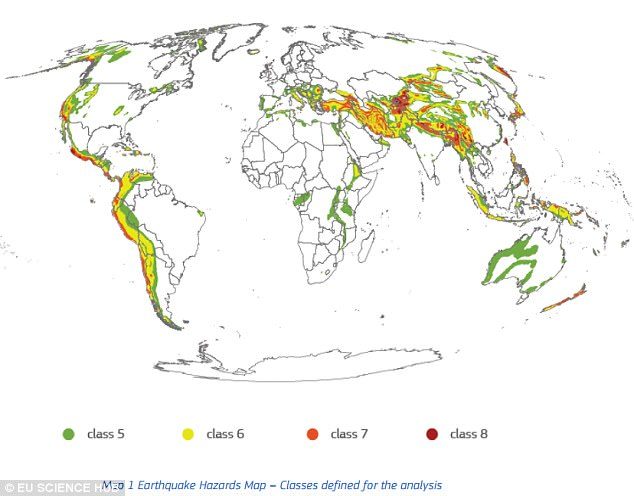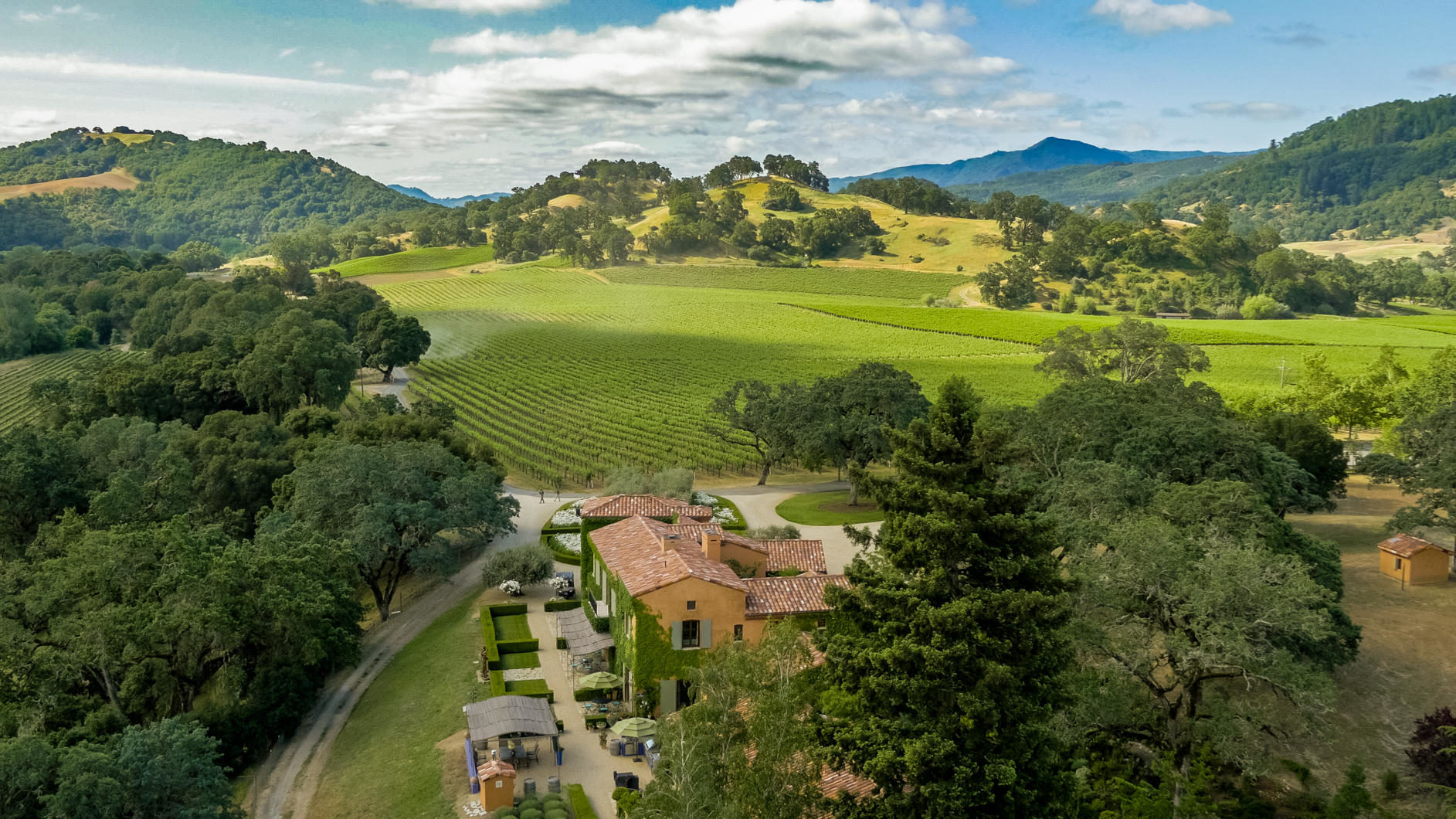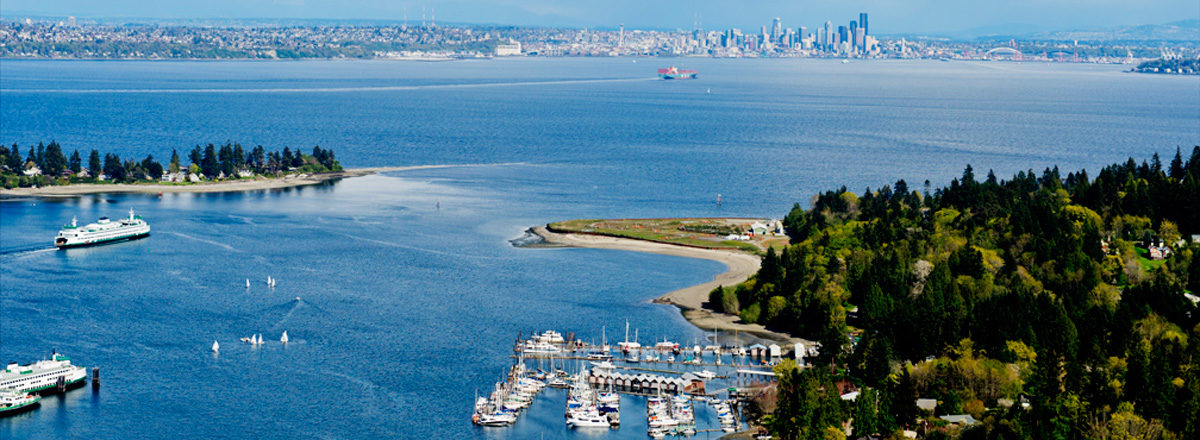
© Kitsap SunA map from the Pacific Northwest Seismic Network shows where the earthquake swarm is centered.
Scientists say hundreds of tiny earthquakes have rumbled through the Bremerton area since the start of May— most too weak for humans to feel.
How long the shaking will continue is anyone's guess.
"Sometimes these swarms last years, sometimes they're over in an hour,"
Pacific Northwest Seismic Network Director John Vidale said Thursday.
The chances of a significant earthquake still remain low.
"The overwhelming odds are there is nothing damaging in our near future," Vidale said.
Though disconcerting to some residents, seismologists hope the ongoing earthquake swarm,
centered between East Bremerton and Bainbridge Island, will reveal new information about the orientation of fault lines running beneath central Puget Sound.
The quakes have already offered some intriguing clues.
Their depth for example — some 15 miles below the earth's surface — is below the level where the Seattle Fault is believed to lie, suggesting the activity could originate from another source."We just don't know," Vidale said, adding more research is needed to draw firm conclusions. "We're still figuring out what details we can decipher."




Comment: Small earthquake shakes Seattle area days after swarm near Kitsap Peninsula